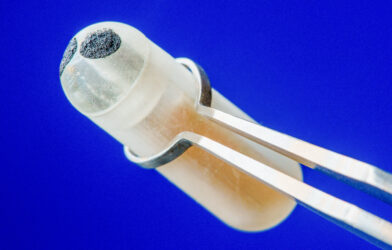Carbon monoxide is largely known as a silent danger with the large potential to be fatal. Though this remains fact, it has been shown to reduce inflammation and promote tissue regeneration. So could there be potential for carbon monoxide to actually improve health, if possible?
Since the 1990s, Leo Otterbein, a professor of surgery at Harvard Medical School and Beth Israel Deaconess Medical Center has been studying the effects of low-dose carbon monoxide. “We’ve known for years that carbon monoxide can impart beneficial effects in all sorts of disease pathologies, when given as an inhaled gas,” says Otterbein, in a statement. “However, it’s been a challenge to use it in the clinic, for a number of reasons related to safe and reproducible administration, and health care workers’ concerns, which has led to people wanting to find other ways to administer it.”
As such, he and a team of researchers from MIT, Brigham and Women’s Hospital, the University of Iowa, and Beth Israel Deaconess Medical Center recently devised a way to deliver carbon monoxide to the body without risking the harmful effects. They successfully accomplished this by using foam-gas entrapping materials (GEMS) that can trap and efficiently deliver it to the digestive tract.
This was first inspired by the use of culinary foams made by chefs. These are often infused with fruits or vegetables, and include thickeners and stabilizers. The MIT team created the foams for their newest study by incorporating food additives like xanthan gum, alginate, methyl cellulose, and maltodextrin. To deliver carbon monoxide to the foam, they created a modified siphon that can be attached to any type of gas cannister.
After a few tests that showed that the release of the gas into the body could be controlled by their timing, they tested different application routes. On mice, they delivered the foam rectally. Consistent with other findings, they found a reduction in inflammation caused by colitis or radiation that is used as treatment for cervical or prostate cancers.
The team took it one step further and investigated how carbon monoxide could be delivered to more remote organs like the liver. Using a mouse model of a Tylenol overdose, which results in liver damage, they found that the foam was able to reach the liver when delivered to the lower gastrointestinal (GI) tract. They found no adverse effects of using the gas in any experiments conducted, which may go to show that it can be safely used for therapeutics in controlled doses.
Although the gas was delivered rectally for much of this research, the team emphasizes that further research can pave the way for oral delivery.
“The foams are so easy to use, which will help with the translation to patient care,” says James Byrne, a physician-scientist and radiation oncologist at the University of Iowa. Many other researchers are also passionate about using carbon monoxide as means to treat inflammatory conditions like Crohn’s disease. This is because current treatments are usually immune-suppressing drugs that can make patients worse off. It’s their hope that their research opens doors to including GEMS in other related applications.
The study is published in the journal Science Translational Medicine.












